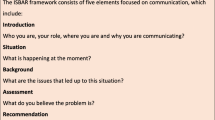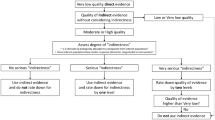Abstract
Aims
To evaluate: (i) the propensity of paediatrics and emergency medicine residents to select different therapeutic options and (ii) the speed and administration success in a high-fidelity simulation of severe hypoglycaemia in a child with type 1 diabetes (T1DM).
Methods
In this single-centre high-fidelity simulation study, 51 paediatrics or emergency medicine residents were exposed to a scenario of severe hypoglycaemia in a T1DM child attending an ambulatory setting, before and after a training on the preparation and administration of both injectable and IN glucagon. Time for drug delivery and its effectiveness were collected.
Results
Before training, 45.1% of participants chose to administer injectable glucagon, 43.1% intravenous glucose solution, 5.9% intranasal (IN) glucagon, and 5.9% took no action. Administration was successful in 74% of injectable glucagon, 33.3% intravenous glucose solution, and 22.7% IN glucagon. After training, 58.8% of participants chose IN and 41.2% injectable glucagon, with 100% of successful administrations for IN glucagon and 90.5% for injectable glucagon. Time to successful administration was shorter for IN than injectable glucagon (23 ± 10 vs. 38 ± 7 s, p < 0.0001).
Conclusions
IN glucagon is an easy and effective option for severe hypoglycaemia treatment, with an almost zero possibility of failure provided that adequate training is imparted.


Similar content being viewed by others
Data availability
The data that support the findings of this study are available from the corresponding author, IR, upon reasonable request.
References
Abraham MB, Jones TW, Naranjo D, Karges B, Oduwole A, Tauschmann M, Maahs DM (2018) ISPAD Clinical practice consensus guidelines 2018: assessment and management of hypoglycemia in children and adolescents with diabetes. Pediatr Diabetes 19(Suppl 27):178–192. https://doi.org/10.1111/pedi.12698
Cherubini V, Rabbone I, Lombardo F, Mossetto G, Orsini Federici M, Nicolucci A (2019) Incidence of severe hypoglycemia and possible associated factors in pediatric patients with type 1 diabetes in the real-life, post-diabetes control and complications trial setting: a systematic review. Pediatr Diabetes 20(6):678–692. https://doi.org/10.1111/pedi.12876
Perantie DC, Wu J, Koller JM, Lim A, Warren SL, Black KJ, Sadler M, White NH, Hershey T (2007) Regional brain volume differences associated with hyperglycemia and severe hypoglycemia in youth with type 1 diabetes. Diabetes Care 30:2331–2337. https://doi.org/10.2337/dc07-0351
Rabinovich A, Priefer R (2021) Glucagon delivery - An overview of current and future devices. Diabetes Metab Syndr 15(4):102155. https://doi.org/10.1016/j.dsx.2021.05.028
La Sala L, Pontiroli AE (2021) New fast acting glucagon for recovery from hypoglycemia, a life-threatening situation: nasal powder and injected stable solutions. Int J Mol Sci 22(19):10643. https://doi.org/10.3390/ijms221910643
Thieu VT, Mitchell BD, Varnado OJ, Frier BM (2020) Treatment and prevention of severe hypoglycaemia in people with diabetes: current and new formulations of glucagon. Diabetes Obes Metab 22:469–479. https://doi.org/10.1111/dom.13941
Rabbone I, Missineo A, Zanetta S, Salzano G, Schiaffini R, Scaramuzza AE, Lombardo F (2021) Parent and patient knowledge of nasal glucagon use and efficacy in a large cohort of Italian children and adolescents with type 1 diabetes. Diabetes Obes Metab 23(8):2004–2005. https://doi.org/10.1111/dom.14398
Singh-Franco D, Moreau C, Levin AD, Rosa D, Johnson M (2020) Efficacy and usability of intranasal glucagon for the management of hypoglycemia in patients with diabetes: a systematic review. Clin Ther 42(9):e177–e208. https://doi.org/10.1016/j.clinthera.2020.06.024
Matsuhisa M, Takita Y, Nasu R, Nagai Y, Ohwaki K, Nagashima H (2020) Nasal glucagon as a viable alternative for treating insulin-induced hypoglycaemia in Japanese patients with type 1 or type 2 diabetes: a phase 3 randomized crossover study. Diabetes Obes Metab 22:1167–1175. https://doi.org/10.1111/dom.14019
Suico JG, Hövelmann U, Zhang S, Shen T, Bergman B, Sherr J, Zijlstra E, Frier BM, Plum-Mörschel L (2020) Glucagon administration by nasal and intramuscular routes in adults with type 1 diabetes during insulin-induced hypoglycaemia: a randomised, open-label, crossover study. Diabetes Ther 11:1591–1603. https://doi.org/10.1007/s13300-020-00845-7
Pontiroli AE, Tagliabue E (2020) Intranasal versus injectable glucagon for hypoglycemia in type 1 diabetes: systematic review and meta-analysis. Acta Diabetol 57:743–749. https://doi.org/10.1007/s00592-020-01483-y
Seaquist ER, Dulude H, Zhang XM, Rabasa-Lhoret R, Tsoukas GM, Conway JR, Weisnagel SJ, Gerety G, Woo VC, Zhang S, Carballo D, Pradhan S, Piché CA, Guzman CB (2018) Prospective study evaluating the use of nasal glucagon for the treatment of moderate to severe hypoglycaemia in adults with type 1 diabetes in a real-world setting. Diabetes Obes Metab 20(5):1316–1320. https://doi.org/10.1111/dom.13278
Deeb LC, Dulude H, Guzman CB, Zhang S, Reiner BJ, Piché CA, Pradhan S, Zhang XM (2018) A phase 3 multicenter, open-label, prospective study designed to evaluate the effectiveness and ease of use of nasal glucagon in the treatment of moderate and severe hypoglycemia in children and adolescents with type 1 diabetes in the home or school setting. Pediatr Diabetes 19(5):1007–1013. https://doi.org/10.1111/pedi.12668
Binotti M, Genoni G, Rizzollo S, De Luca M, Carenzo L, Monzani A, Ingrassia PL (2019) Simulation-based medical training for paediatric residents in Italy: a nationwide survey. BMC Med Educ 19(1):161. https://doi.org/10.1186/s12909-019-1581-3
Settles JA, Gerety GF, Spaepen E, Suico JG, Child CJ (2020) Nasal glucagon delivery is more successful than injectable delivery: a simulated severe hypoglycemia rescue. Endocr Pract 26(4):407–415. https://doi.org/10.4158/EP-2019-0502
Yale JF, Dulude H, Egeth M, Piché CA, Lafontaine M, Carballo D, Margolies R, Dissinger E, Shames AR, Kaplowitz N, Zhang MX, Zhang S, Guzman CB (2017) Faster use and fewer failures with needle-free nasal glucagon versus injectable glucagon in severe hypoglycemia rescue: a simulation study. Diabetes Technol Ther 19(7):423–432. https://doi.org/10.1089/dia.2016.0460
Rickels MR, Ruedy KJ, Foster NC, Piché CA, Dulude H, Sherr JL, Tamborlane WV, Bethin KE, DiMeglio LA, Wadwa RP, Ahmann AJ, Haller MJ, Nathan BM, Marcovina SM, Rampakakis E, Meng L, Beck RW, Exchange T1D (2016) Intranasal glucagon for treatment of insulin-induced hypoglycemia in adults with type 1 diabetes: a randomized crossover noninferiority study. Diabetes Care 39(2):264–270. https://doi.org/10.2337/dc15-1498
Acknowledgements
The authors would like to thank all the residents who took part to this simulation study.
Funding
This research did not receive any specific grant from funding agencies in the public, commercial, or not-for-profit sectors.
Author information
Authors and Affiliations
Contributions
All authors contributed to the study conception and design. Material preparation, data collection, and analysis were performed by Alice Monzani, Silvia Savastio, Andrea Manzo, Antonio Scalogna, Erica Pozzi, and Ivana Rabbone. The first draft of the manuscript was written by Alice Monzani and Ivana Rabbone, and all authors commented on previous versions of the manuscript. All authors read and approved the final manuscript.
Corresponding author
Ethics declarations
Conflict of interest
The authors declare that they have no conflict of interest.
Ethical standard
This is a simulation study. The Ethics Committee of University of Piemonte Orientale (Novara, Italy) has confirmed that no ethical approval is required.
Informed consent
All subjects provided written informed consent to participate to the simulation study and to the tape-recording of scenarios.
Additional information
Managed By Antonio Secchi.
Publisher's Note
Springer Nature remains neutral with regard to jurisdictional claims in published maps and institutional affiliations.
Supplementary Information
Below is the link to the electronic supplementary material.
Supplementary file1 (MP4 112799 kb)
Rights and permissions
Springer Nature or its licensor holds exclusive rights to this article under a publishing agreement with the author(s) or other rightsholder(s); author self-archiving of the accepted manuscript version of this article is solely governed by the terms of such publishing agreement and applicable law.
About this article
Cite this article
Monzani, A., Savastio, S., Manzo, A. et al. Not only for caregivers: intranasal glucagon for severe hypoglycaemia in a simulation study. Acta Diabetol 59, 1479–1484 (2022). https://doi.org/10.1007/s00592-022-01952-6
Received:
Accepted:
Published:
Issue Date:
DOI: https://doi.org/10.1007/s00592-022-01952-6




